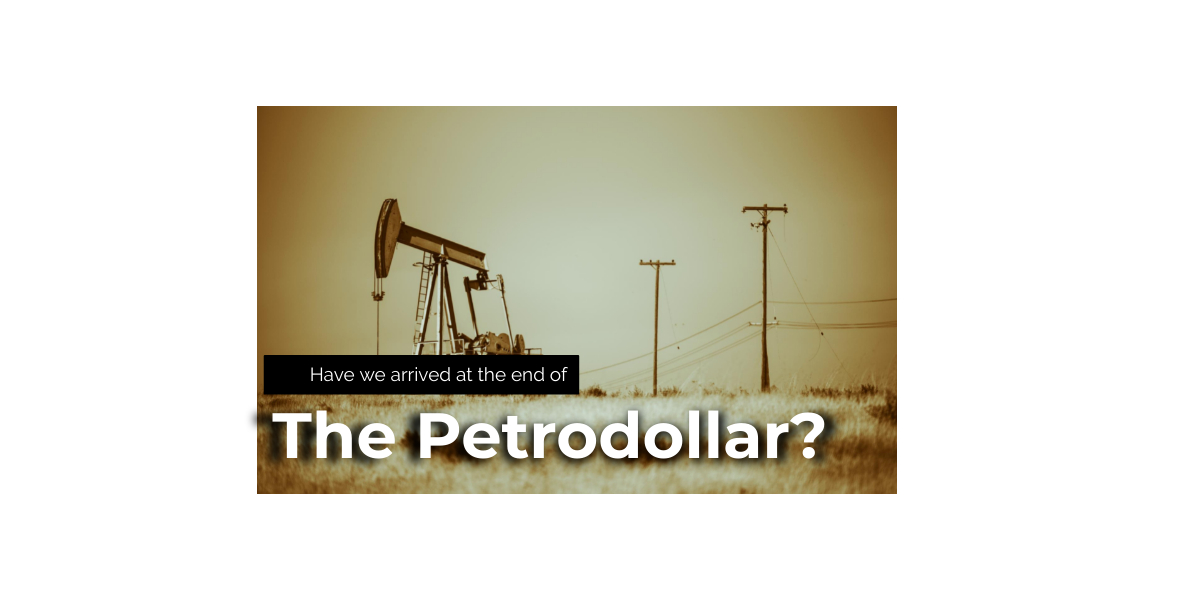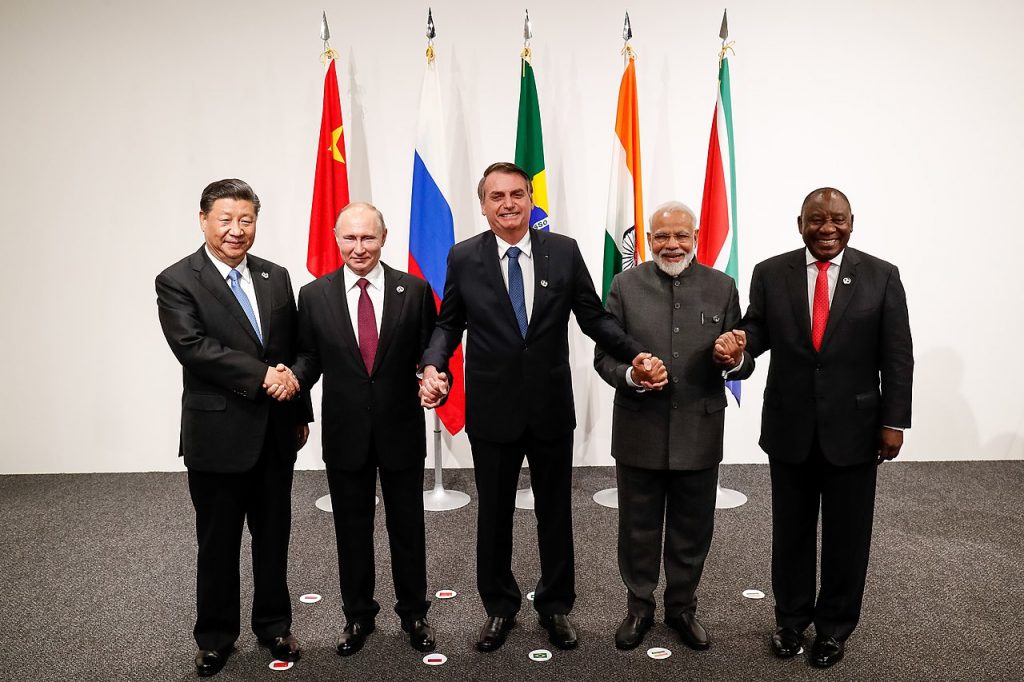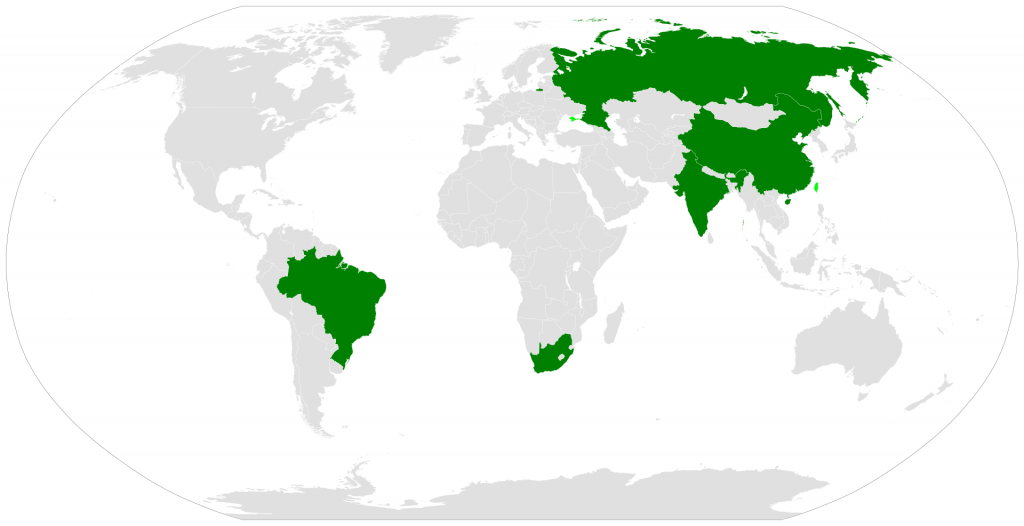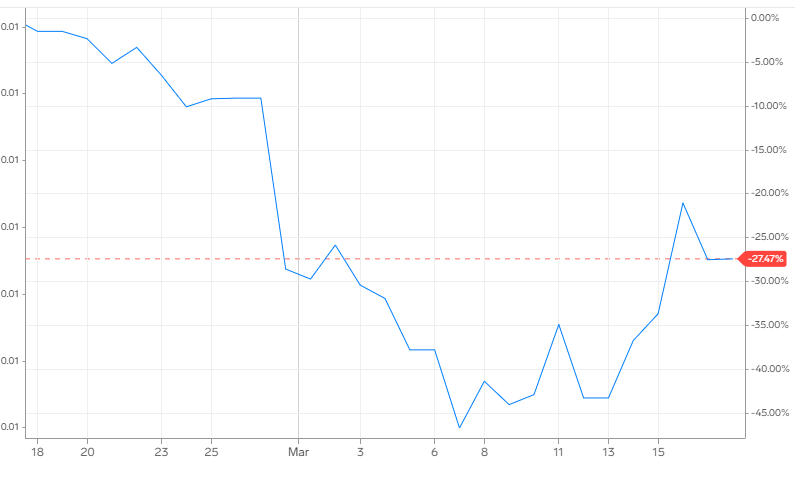
Over the past month, we have witnessed an invasion of Ukraine which has been accompanied by the reminder that truth is the first casualty of any war. As I browse the headlines and stories to try to understand what is occurring, I sense that the three-dimensional game of geopolitics in this instance revolves a great deal around challenging the petrodollar system which has been in place since the 1970’s. In this article I will explore a brief history of the petrodollar and how it has greatly benefited the United States over the last 50 years.
On August 15, 1971, President Richard M. Nixon removed gold convertibility to the U.S. dollar when he shut the gold window. In so doing he ushered in the age of fiat currencies. At the time there was tremendous angst about the U.S. dollar remaining the reserve currency of the world. Secretary of State Henry Kissinger and Nixon created a plan that would extend demand for U.S. dollars all over the world.
The world was amidst a reindustrialization and demand for crude oil and petroleum products was growing by leaps and bounds. Kissinger met with the Royal Saudi family and ensured them that the United States would protect their oil fields if they would only sell their product priced in U.S. dollars. This action created the Petrodollar system.
The benefit that it posed to the United States was an assurance that the U.S. dollar would be the only currency used to transact for petroleum products. The Saudis reinvested their U.S. dollars in the U.S. Treasury market further bolstering and strengthening the full faith and credit of the U.S. government.
From a geopolitical perspective this tactic was strategically brilliant. Before August 15, 1971, the U.S. Dollar was convertible to Gold. When convertibility to gold was eliminated the nations, leaders worried that no one would want a fiat currency that was only backed by political promises. By requiring the U.S. dollar to be used in all Petroleum transactions the illusion was created that Oil and the U.S. Dollar were equivalents. Over the last 50 years, the Petrodollar created a consistent demand for U.S. dollars even though the U.S. dollar had become a fiat currency backed by only political promises.
This economic sleight of hand worked very well initially until many nations realized that they were complete captives to the reigning U.S. dollar. Wars have been fought over the last five decades to keep this system in place and dissuade any oil producing nation from trying to break away.
However, over the last 20 years the B.R.I.C.S nations organized and issued strong and vibrant disagreements with the Petrodollar system. B.R.I.C.S is an acronym for Brazil, Russia, India, China, and South Africa. All these nations have been coordinating their policies to attempt to bypass the Petrodollar system whenever possible.

The reality is most Americans are unaware of the Petrodollar and how pivotal it has been to the U.S. economy. Petrodollar recycling creates huge demand for American assets. Since oil is the most sought-after commodity in the world, oil priced in U.S. dollars has created a perspective of U.S. dominance. When you look at world events through this prism you see the world and current events in an entirely new light.
U.S. hegemony has been challenged for many decades. Saudi Arabia has dealt exclusively in dollars for their oil, but they have been in talks with China to trade in yuan. The B.R.I.C.S nations all feel that they are being penalized by having to buy dollars before they purchase oil.

What appears to be happening around the world is de-dollarization. This is the process where the economic landscape is all priced in dollars. It is what we nations of the world have built familiarity with over the last 5 decades. All developed nations keep score in dollars. The threat which accompanies de-dollarization is that there is tremendous uncertainty as to what comes next. Should the Petrodollar disappear will it be replaced by a basket of fiat currencies that is more inclusive of other nations?
Following Russia’s attack on Ukraine, Russian banks have been sanctioned out of the international SWIFT banking system which makes it impossible for them to buy dollars in exchange for commodity purchases.
Could that have been an intentional consequence of the invasion?
Look at how the Russian Ruble has fallen as much as 45% over the past month.

But what is curious is Russia produces 10 million barrels of oil per day and interestingly enough that is very close to the quantity of oil that China needs for its economy to function optimally. It seems that neither country must generate a demand for dollars to be able to acquire oil. More importantly, it appears that the Chinese banking system is offering an alternative banking platform to Russia.
What is equally peculiar in my observation is that Vladimir Putin has been stockpiling Gold for the last 20 years, more so than any other nation. Surely Putin must’ve known Russia would be sanctioned harshly by the international community. His ruthless invasion of Ukraine doesn’t make sense if you price it in dollars. But as a thought exercise consider the possibility of Russia coordinating with OPEC and creating a real hard asset currency backed by Oil. If you contemplate that possibility just as an idea, you will quickly realize that Putin is probably not keeping economic score in dollars and that he is clearly leading the charge that the B.R.I.C.S nations started two decades ago.
Like it or not, the Wall Street Journal is reporting Saudi Arabia is in active talks with Beijing to price its oil sales to China in yuan. If this is true, it will mark the end of the petrodollar as it targets the heart of the American financial system and challenges how the fiat economy has operated over the last five decades.
Should Saudi Arabia decide to trade with China in yuan it would make the U.S. Dollar/SWIFT banking system a relic of a dominant bygone era.
China buys about 25% of the oil that Saudi Arabia exports, and if priced in yuan, those sales would boost the standing of China’s currency and diminish the demand for U.S. dollars. More importantly, it sets the Chinese currency on a path to becoming a global Petro yuan reserve currency.
Needless to say, the US is not happy with this historic transformation, but there is not much that they can do about it. As unlikely and as heartless as it sounds, the war in the Ukraine has created an opportunity for China to do away with the Petrodollar. Oil and by extension the entire global commodities market, is the insurance policy of the status of the dollar as reserve currency. That insurance policy is seriously being challenged in the current geopolitical environment. So much so that the Shanghai International Energy Exchange has agreed to unveiling a new futures contract priced in yuan.
While the pieces on the chessboard move certain moves are clear. Russia which controls the fertilizer market is starving the world of much needed resources in retaliation for the sanctions that were imposed upon them. This results in much higher commodity prices and exacerbates inflationary pressures. Meanwhile, silent partner China quietly positions itself to pick up the monetary pieces of a crumbling petrodollar and challenge the reserve status of the U.S. dollar. Soon you will hear much more about the petroyuan.
China for the last two decades has called for a replacement of the U.S. dollar as a global currency. China is also one of the largest foreign holders of the dollar as it owns over $1.1 trillion of U.S. Treasuries.
What happens if China decides to sell its Treasury debt?
I don’t claim to have the answers to this dilemma. If the U.S. dollar is losing its status as the worlds reserve currency it is an empowering exercise to ponder the possibilities of what comes next.
As a trader and investor, this is important to you because it will also challenge how you keep score in your portfolio.
As a thought exercise, I would challenge you to measure the growth of your portfolio in something besides dollars. Maybe Gold, Silver, Real Estate, Oil, Bitcoin? If the Saudis are in the process of de dollarizing – it would be very prudent for you to have a Plan B as well. But I must admit that this is a very, very difficult thing to do.
What is much easier to do in the interim, is to make sure you are focused on putting yourself on the right side, of the right trend at the right time. You can do that with artificial intelligence and the Vantagepoint A.I. software has proven to be accurate up to 87.4% of the time in its forecasts. I don’t know where stocks, gold, oil, and bitcoin are going to trade one year from now. But at my fingertips I have access to the same technology that has beaten humans at Chess, Jeopardy, Go and Poker. Why should trading be any different?
The reason that prices are going up is because the value of the currency is going down.
This is such a touchy topic because when a currency is decreasing in value, citizens will purchase any good they can afford to get out of cash. This becomes a vicious cycle where people quickly rush to acquire more goods because the goods hold their value better than the paper money. Look at any country that is ravaged by inflation and you will find a citizenry that is distrustful of government because they have seen their money evaporate right before their eyes. The inflation occurs always because the currency is being debased at the money printer.
As an investor and trader, how do you go about making sense of it all?
As a trader, the most important question on your mind is “How do I protect the purchasing power of my portfolio?”.
Finding value is becoming a completely consuming activity on the part of traders and investors. The target moves quickly based upon too many factors that remain unseen to the naked eye.
It’s all about getting on the right side, of the right trend at the right time.
Most traders have problems with the timing of their trades.
If you want to win, it’s all about who has the best tools. Artificial intelligence excels at keeping traders on the right side of the right trend at the right time.
Let’s get candid here:
- The market is brutally honest – there are winners and losers.
- It’s very black and white.
- If you need a friend, get a dog.
- If you are going to win, someone else must lose.
- If survival of the fittest makes you uneasy, stay out of the financial markets.
We live in unique times. The Printing Press is diluting the value of our money.
Everyone is aware if the money supply grows 30% you must grow your portfolio by that amount just to break even when you look at your purchasing power.
How do you think your investment portfolio compares when pitted against artificial intelligence?
Are you capable of finding those markets with the best risk/reward ratios out of the thousands of trading opportunities that exist?
Knowledge. Useful knowledge. And its application is what A.I. delivers.
You should find out. Join us for a FREE, Live Training. We’ll show you at least three stocks that have been identified by the A.I. that are poised for big movement… and remember, movement of any kind is an opportunity for profits!
Discover why Vantagepoint’s artificial intelligence is the solution professional traders go-to for less risk, more rewards, and guaranteed peace of mind.
Pay Attention.
Visit with us and check out the A.I. at our Next Live Training.
It’s not magic. It’s machine learning.
Make it count.
IMPORTANT NOTICE!
THERE IS SUBSTANTIAL RISK OF LOSS ASSOCIATED WITH TRADING. ONLY RISK CAPITAL SHOULD BE USED TO TRADE. TRADING STOCKS, FUTURES, OPTIONS, FOREX, AND ETFs IS NOT SUITABLE FOR EVERYONE.
DISCLAIMER: STOCKS, FUTURES, OPTIONS, ETFs AND CURRENCY TRADING ALL HAVE LARGE POTENTIAL REWARDS, BUT THEY ALSO HAVE LARGE POTENTIAL RISK. YOU MUST BE AWARE OF THE RISKS AND BE WILLING TO ACCEPT THEM IN ORDER TO INVEST IN THESE MARKETS. DON’T TRADE WITH MONEY YOU CAN’T AFFORD TO LOSE. THIS ARTICLE AND WEBSITE IS NEITHER A SOLICITATION NOR AN OFFER TO BUY/SELL FUTURES, OPTIONS, STOCKS, OR CURRENCIES. NO REPRESENTATION IS BEING MADE THAT ANY ACCOUNT WILL OR IS LIKELY TO ACHIEVE PROFITS OR LOSSES SIMILAR TO THOSE DISCUSSED ON THIS ARTICLE OR WEBSITE. THE PAST PERFORMANCE OF ANY TRADING SYSTEM OR METHODOLOGY IS NOT NECESSARILY INDICATIVE OF FUTURE RESULTS. CFTC RULE 4.41 – HYPOTHETICAL OR SIMULATED PERFORMANCE RESULTS HAVE CERTAIN LIMITATIONS. UNLIKE AN ACTUAL PERFORMANCE RECORD, SIMULATED RESULTS DO NOT REPRESENT ACTUAL TRADING. ALSO, SINCE THE TRADES HAVE NOT BEEN EXECUTED, THE RESULTS MAY HAVE UNDER-OR-OVER COMPENSATED FOR THE IMPACT, IF ANY, OF CERTAIN MARKET FACTORS, SUCH AS LACK OF LIQUIDITY. SIMULATED TRADING PROGRAMS IN GENERAL ARE ALSO SUBJECT TO THE FACT THAT THEY ARE DESIGNED WITH THE BENEFIT OF HINDSIGHT. NO REPRESENTATION IS BEING MADE THAT ANY ACCOUNT WILL OR IS LIKELY TO ACHIEVE PROFIT OR LOSSES SIMILAR TO THOSE SHOWN.




